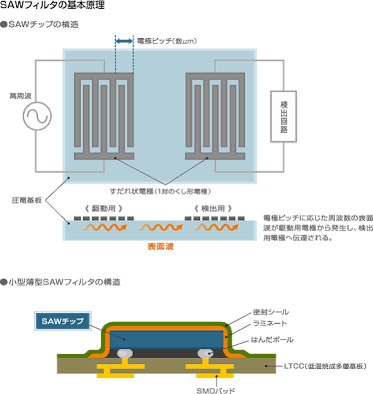
Japan: 5G latest technology: AFM-1520, Metro Circ, FPGA, etc.
Japan: 5G manufacturer
Each company has proposed new mounting machines, new materials, and new technologies, including those for 5G base stations, and has begun to introduce them to the market one after another.
Goldman Sachs Securities:
The number of 2020 / 5G smartphones in the global market is expected to be 200 million.
For 5G smartphones that use high frequency bands,
While supporting the current frequency band,
Antennas compatible with new frequency bands,
Requires a filter to improve communication quality.
Therefore, the number of parts to be mounted naturally increases.
[TDK]: SAW filter “AFM-1520”
Developed and started receiving orders for the AFM-1520 flip chip mounting machine for surface acoustic wave (SAW) filters for 5G smartphone / electronic component manufacturers.
The mounting speed is less than 0.65 seconds, 0.65 seconds.
The company plans to deliver the products one after another in April 2008 and aims to sell 150 to 200 units a year.
What is a SAW filter:
Used to “receive / transmit radio waves of the required frequency”.
Reduces mounting head weight by 20% to increase mounting speed.
About 10% faster than software / update.
The mounting accuracy is 7 micrometers per 3 sigma (micro is one millionth).
It is said that the number of SAW filters / installation will increase, especially in low-end smartphones in China.
[Murata]: “Metro Circ” for 5G smartphones
For 5G smartphones, Murata’s resin multilayer board is the dominant force.
This is useful for saving space on 5G smartphones that require a large number of parts.
It can be bent flexibly.
[Murata]: Monoblock for 5G base stations
Murata Manufacturing has commercialized a small DC converter “Monoblock” for CPUs, such as FPGAs (programmable LSIs), for base stations.
“Monoblock”: small DC converter
A module component called a point of load (POL) that controls the voltage required to drive the CPU.
This spring, we plan to mass-produce POL monoblocks that are one-third the area of conventional products, and have already started providing samples.
[Showa Circular Tube]: Thermal conductive composite material “Zebro”
The problem of heat dissipation is starting to be seen as a problem in the millimeter-wave band module structure.
More heat must be dissipated to place high power components in limited space.
Showa Marutsu (Higashi-Osaka City, Osaka Prefecture) is a manufacturer of paper tubes and is working on solving this problem.
We have developed a highly adhesive thermal conductive composite “Zebro” with thermal conductivity of 1 meter Kelvin / 800 watts (equivalent to twice the thickness of copper).
“Zebro”: Product Overview
High grade graphite sheet is used for heat conduction material and laminated.
Because graphite sheet has the property of radiating heat in the horizontal direction,
The block is cut in the vertical direction,
By laying 90 degrees, we succeeded in releasing heat in the thickness direction.
In the case of composite material, the sheet is 50 mm square and 0.5 mm-1 mm thick,
If the composite material is three-dimensional, it is 100 mm square and the thickness is up to 100 mm.
Heat resistant temperature is 180 ° C. Various grades were prepared.
[Kyoden]: 5G, low loss, heat dissipation technology
Kyoden designs, manufactures, mounts and develops printed circuit boards.
We are working on developing new businesses by narrowing down the theme to 5G, low loss, and heat dissipation.
For local 5G infrastructure:
Millimeter-wave radar antenna substrate / Improve processing accuracy and focus on heat dissipation.
Since high-speed, large-capacity information processing increases the amount of heat generated by components, we are developing a high-heat-dissipation board.
[Toshiba Business Expert]; semiconductor / module prototype
For 5G, there is also a benefit for companies engaged in trial production and development.
Toshiba Business Expert will make prototypes of semiconductors and modules in the Toshiba Group.
The company is proposing “copper ball bump flip chip mounting” that attaches directly to the board with low-resistance copper.
JEITA: Global Demand for 5G Market
From now on, it will grow at an average annual rate of 63.7%, and will grow to 16.8 trillion yen in 30 years, a 300 times increase from 2018.
“New switch”
https://headlines.yahoo.co.jp/hl?a=20200202-00010001-newswitch-bus_all